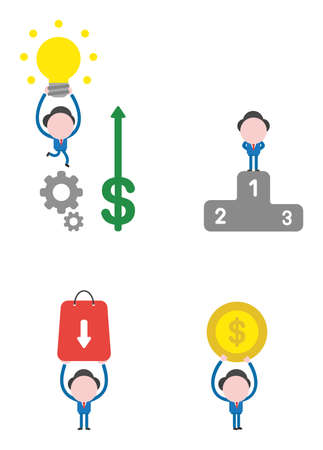Reframing Rejection: Shifting Your Mindset
When you’re building a business, hearing “no” can feel like hitting a brick wall. But what if every rejection is actually a hidden detour guiding you to something better? In the world of entrepreneurship, the way you look at rejection can make all the difference. Let’s explore how changing your perspective on rejection can uncover new opportunities and help you grow, both personally and professionally.
Why We Fear Rejection
Most of us grow up learning that rejection means failure. It stings, it’s uncomfortable, and it can shake our confidence. Especially in American culture, where winning and success are celebrated, “no” often feels like a dead end. But what if we viewed rejection as feedback rather than failure?
Common Feelings After Rejection
| Feeling | Typical Reaction | Alternative Mindset |
|---|---|---|
| Disappointment | Giving up or feeling unworthy | Reflecting on what you can learn |
| Frustration | Blaming others or circumstances | Seeing it as a chance to pivot |
| Anxiety | Avoiding future risks | Building resilience for next time |
The Power of Perspective Shift
If you start seeing “no” as “not yet” or “try another way,” rejection turns into redirection. Many successful American entrepreneurs have stories about how a rejection led them to their biggest breakthroughs. For example, J.K. Rowling was rejected by multiple publishers before Harry Potter became a phenomenon. The same goes for countless startup founders in Silicon Valley who faced dozens of investor rejections before landing the right partnership.
How to Embrace Rejection as Redirection:
- Ask for Feedback: Don’t be afraid to ask why someone said no—it could provide valuable insights.
- Adjust Your Approach: Use what you learn to improve your pitch or product.
- Stay Open-Minded: Sometimes the opportunity you want isn’t the one you need. Stay flexible.
- Cultivate Resilience: Each rejection makes you stronger and more prepared for future challenges.
Your Next Step Forward
The key is to not let rejection stop your momentum. By reframing how you see “no,” you open yourself up to opportunities that might have been hidden otherwise. Remember: every closed door could be pointing you toward an even bigger break ahead.
2. Learning from No: Extracting the Lesson
Getting a “no” can sting, but it’s also a golden opportunity to learn and grow. In the American startup scene, every rejection is a chance to sharpen your game. Instead of brushing off setbacks or taking them personally, take time to analyze what happened and why. Here’s how you can turn every “no” into a stepping stone for your next big break.
Why Analyzing Rejection Matters
When someone turns down your pitch or idea, don’t just move on—dig deeper. Ask yourself what led to the rejection. Was it your product fit? The timing? Your pitch delivery? Understanding these details helps you avoid making the same mistake twice. It also shows that you’re willing to adapt and evolve, which is key in America’s fast-moving business world.
How to Break Down a Setback
| Step | What To Do | Example |
|---|---|---|
| Ask for Feedback | Reach out politely and ask why your idea was turned down. | “Thank you for your time. Could you share what made you hesitant about my proposal?” |
| Identify Patterns | Look for common reasons behind multiple rejections. | If 3 investors mention “unclear value,” it’s time to clarify your pitch. |
| Adjust Your Approach | Take what you’ve learned and tweak your strategy. | Add market research data if people want proof your idea will work. |
| Stay Open-Minded | Avoid getting defensive; view criticism as free advice. | If someone suggests a new target market, consider exploring it. |
Applying Lessons to Future Strategies
The real power of rejection comes when you use what youve learned to make smarter moves next time. Maybe you need to practice your elevator pitch or focus on a different customer segment. Maybe it’s time to collaborate with someone who has skills you lack. By treating every “no” as feedback—not failure—you set yourself up for bigger wins down the road.

3. Resilience in the Face of Setbacks
No one likes hearing “no,” especially when you’re chasing your dreams. But in American startup culture, every rejection can be a new opportunity if you know how to bounce back. Let’s break down some practical ways to stay resilient, keep your motivation high, and come back even stronger after setbacks.
Actionable Techniques to Build Resilience
| Technique | How to Apply | Real-World Example |
|---|---|---|
| Reframe the Narrative | Instead of thinking “I failed,” ask yourself, “What can I learn?” Turn every ‘no’ into a lesson. | A startup founder gets turned down by an investor but uses the feedback to improve their pitch for next time. |
| Set Micro-Goals | Break big ambitions into smaller, achievable steps to avoid feeling overwhelmed. | An entrepreneur sets weekly targets for customer outreach instead of focusing only on landing a big client. |
| Create a Support Network | Surround yourself with positive people who understand your journey—think mentors, peers, or online communities. | A solo founder joins a local business group to share wins and losses, finding encouragement in tough times. |
| Practice Self-Care | Don’t ignore your mental health. Take breaks, exercise, and find activities that recharge you. | An innovator schedules daily walks or downtime to clear their mind after rejection emails. |
Staying Motivated When Things Get Tough
- Remember Your “Why”: Revisit the reason you started this journey. Keep it front and center, especially when things get rough.
- Celebrate Small Wins: Every little victory counts. Did someone reply positively? Land a small partnership? Celebrate it!
- Visualize Success: Picture where you want to be in six months or a year. Visualization can help you push through temporary setbacks.
Bouncing Back Stronger After Hearing “No”
If you get rejected, don’t take it personally. In the U.S., persistence is often admired more than instant success. Use each “no” as data—not defeat. Analyze what happened, tweak your approach, and try again. Remember: Many iconic American companies only succeeded after dozens of rejections. The key is not avoiding failure but learning how to respond when it happens.
4. Seeking the Open Door: Navigating Alternative Paths
When you hear “no,” it can feel like a dead end. But what if that rejection is actually pointing you toward something better? In the world of entrepreneurship, using rejection as a compass can lead you to fresh ideas, unexpected partners, or new markets you might never have considered.
Turning Setbacks into Opportunities
Every time someone shuts a door on your idea, service, or product, its an invitation to look for another way in. Instead of seeing rejection as failure, try viewing it as valuable feedback. Maybe your original pitch wasnt the right fit for that specific client or market—but could it work elsewhere? This mindset shift helps you stay open to innovation and creative problem-solving.
How Rejection Can Guide You
| Rejection Experience | New Direction | Action Step |
|---|---|---|
| Your product isn’t picked up by local stores | Target online marketplaces or pop-up shops | List on Etsy or Amazon; organize a community event booth |
| An investor says “no” to your pitch | Refine your business model or explore crowdfunding | Update your pitch deck; launch a Kickstarter campaign |
| A potential partner declines collaboration | Seek out startups with similar values or goals | Network at industry meetups; connect via LinkedIn groups |
| Your ad campaign gets low engagement | Test different platforms or messaging angles | Try TikTok instead of Facebook; A/B test new slogans |
The Power of Curiosity and Flexibility
If one approach doesn’t work, use curiosity as your guide. Ask yourself: What else is out there? Who else could benefit from what I offer? Sometimes the best opportunities are hidden just beyond the initial “no.” Staying flexible lets you pivot quickly and take advantage of openings others might miss.
Quick Tips for Navigating New Paths:
- Listen Closely: Pay attention to why you were rejected—there’s often a clue in the feedback.
- Research Alternatives: Spend time exploring adjacent markets, industries, or audiences.
- Network Broadly: Reach out to new communities—both online and offline—to discover untapped opportunities.
- Pilot Fast: Test small changes before making big moves. Quick experiments can reveal surprising results.
The next time you face rejection, remember: sometimes that closed door is simply nudging you toward an open one just down the hall. Embrace the detour—you might find your next big break where you least expect it.
5. American Success Stories: Turning Rejection into a Launchpad
Rejection isn’t just a setback—it’s often the first step toward something bigger. Across the United States, countless entrepreneurs and innovators have faced “no” after “no,” only to turn those moments into turning points for their biggest breakthroughs. Let’s get inspired by some real-life stories of Americans who turned rejection into a launchpad for success.
Famous U.S. Entrepreneurs Who Turned “No” Into Opportunity
| Name | What Was Rejected? | The Big Break |
|---|---|---|
| Walt Disney | Fired from a newspaper for “lacking imagination”; many studios said no to Mickey Mouse | Founded Disney Studios, now a global entertainment empire |
| Oprah Winfrey | Demoted from her news anchor job; told she was “unfit for TV” | Became America’s most influential talk show host and media mogul |
| Howard Schultz (Starbucks) | Rejected by over 200 investors when pitching his coffee shop idea | Built Starbucks into an international coffee giant |
| Sara Blakely (SPANX) | Countless manufacturers turned down her prototype for shapewear | Became the youngest self-made female billionaire in the U.S. |
| Steve Jobs (Apple) | Kicked out of Apple, the company he co-founded | Came back to lead Apple to revolutionary products like the iPhone and iPad |
The Takeaway: “No” Means Not Yet—Not Never
If you’re hearing “no” right now, remember that you’re in good company. These iconic Americans didn’t let rejection define them—instead, they saw it as redirection. Whether you’re pitching your startup idea, applying for funding, or just trying to get your foot in the door, every rejection is a chance to learn, adapt, and come back stronger. Your next big break might be one “no” away.


